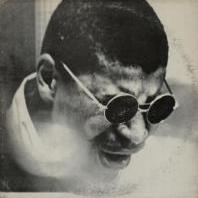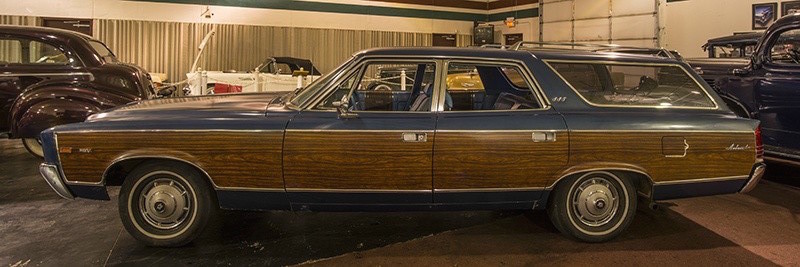-
Posts
5,045 -
Joined
-
Last visited
-
Donations
0.00 USD
Content Type
Profiles
Forums
Events
Blogs
Everything posted by Late
-
By the way, just received the VICJ of Tadd Dameron's The Magic Touch today in the mail. Wow! Nice sound, and, more importantly, great writing and great playing (especially from Johnny Griffin, though Julius Watkins gets in one pleasantly bizarre solo).
-
nmorin — Please let us know what this one's like! (I was just about to make the same order myself.) I've always liked this session, but it never seems to get any lip service among Miles fans. (The track "Tasty Pudding" is tasty indeed.) I believe the VICJ flips the playing order in contrast to the OJC. Is this correct?
-
No, but as I'm a fan Tchicai's, I'd probably enjoy it ... Yusef's latest book, Taboo, just came out recently. Haven't read it yet.
-
Aha ... I did read your "drone" thread. To answer — no, I stay away (as far as possible) from droning. I think we might be able to thank Pound and Eliot (and even cummings) for establishing (and perpetuating) "the drone" in modern American poetry. To be honest, I just don't hear the purpose it serves. For me (and one of my very favorite poets, Louise Glück, does this to an extent), "the drone" distracts from the content of the work, as if a listener is supposed to notice some kind of mantra, rather than the very meanings of the words used themselves. I just can't get with any of The Beats, but that's another thread ... To my ears, Yusef Komunyakaa is one of the most musical of contemporary American poets on the scene today. His work, when read aloud, actually seems to benefit from the cadence of his speech. The only poet I can think of, off the top of my head, that I'm not bothered by "the drone" when hearing his poems read aloud is Theodore Roethke. Every syllable counts with that guy ...
-

Larry Kart's jazz book
Late replied to Larry Kart's topic in Jazz In Print - Periodicals, Books, Newspapers, etc...
Very worthwhile, particularly for the saxophonists' work. Evans' playing doesn't seem to draw a lot of attention to itself, but he turns in some unexpected phrases here and there. I'd give it a strong . -
How true! Firebirds also gives you a chance to hear the little-played alto clarinet. It's even pictured on the cover!
-
A lot of people here advertise and/or discuss (which I think is great) their own books on jazz, or recordings of jazz, so I hope it's not too out of line to list a recent book of poems, published by the University of Chicago Press. Here or here. No poems on jazz, but Louis Armstrong does get mentioned once.
-
The Bards currently have this 3-disc set on sale for $19.99 ... Some of it's great, some of it's not, but it's the only way you can hear some of those BYG tracks (vinyl notwithstanding).
-
It's a good session. I like Things Are Swingin' a little better, but Jump for Joy is a nice pairing. It has fine versions of "Just in Time" and "Cheek to Cheek" — the latter tune, I think, is very hard not to make schmaltzy, and Lee brings it off without schmaltz.
-
Carrie Bradshaw dated Alexandr Petrovsky until she realized that she would always come second to his light installations ...
-
Really? That's strange, as my English EMI edition has Things Are Swingin' paired with Jump for Joy: Another fine one ... That was a fine series (is it still going?) — the English Capitol/EMI two-fer series of vocalists. Some fine Julie London and (even) Dean Martin could be picked up that way ...
-
David mentioned Don Ellis above, and I'd single out the following album as a "must-have" for anyone even remotely interested in "progressive" trumpet playing ... Just look at the line-up: Don Ellis: trumpet Al Francis: vibraphone Jaki Byard: piano Ron Carter: bass Charlie Persip: drums recorded in Englewood Cliffs, New Jersey May 11, 1961 supervised by Esmond Edwards There is certainly some "out" playing here, and relatively early (1961), all things considered ...
-
I've never even heard of this record (or Tatro for that matter). What else can you tell me about it? Tatro played the tenor saxophone in Stan Kenton's orchestra when he was a teenager, but largely gave up the horn (whether or not entirely, I don't know) to focus on composing in later years. Jazz for Moderns uses two different octets. If you like Lennie Niehaus on Prestige, or Teddy Charles' stuff, you'll probably like this album. Here are the details: 1. Backlash 2:58 2. Multiplicity 2:50 3. Minor Incident 3:27 4. Turbulence 2:10 5. Low Clearance 3:01 6. Folly 2:19 7. Dollar Day 3:38 8. Easy Terms 4:13 9. Outpost 3:09 10. Maybe Next Year 2:57 11. Conversation Piece 3:02 Stu Williamson: trumpet Bob Enevoldsen: valve trombone Joe Eger or Vincent de Rosa: french horn Lennie Niehaus or Joe Maini: alto saxophone Bill Holman: tenor saxophone Jimmy Giuffre or Bob Gordon: baritone saxophone Ralph Peña: bass Shelly Manne: drums recorded in Los Angeles September 1954 - November 1955 supervised by Lester Koenig Sound Samples. The music is definitely not about "emoting" in the conventional "out" sense, but rather various degrees of dissonance and resolution. Joe Maini does, however, get in some fine (if brief) solos.
-
What Lacy have you all been listening to? The most recent Lacy disc to come out of my player was Futurities, Part I. I know Part II better, but am really getting into Part I. Here, Irène Aëbi is essential (so don't go there if you can't stand her) ... and I bet Creeley loved the result of his poems put to music.
-
I don't have Black Coffee (wish I did), but another "jazzier" side of Lee can be found on Things Are Swingin'. That one holds up over time.
-
I'll also have to go on the assumption that most here have the Lacy OJCs, namely the date with Don Cherry. Great stuff.
-
How one defines "progressive" or "out" is always a relative thing, of course. That said, all the sessions (led and co-led) by Eric Dolphy are worthwhile, as are the two sessions by Ornette Coleman. I'd particularly single out these three sessions: Most here, I'm guessing, have this one. Great to hear Taylor with vibes. I always find something new in this record when I return to it. Four-and-a-half stars (sometimes five) in my book. Simmons, in particular, rips it up, and you can hear what Mingus must have heard (as he hired Simmons for a brief period) in his playing, most notably in the feature "Bojangles." Scott Yanow gives a surprisingly harsh to this one, but I find it to be one of the "missing links" in West Coast Out. (I'll let everyone decipher that term for themselves.) Very subtle at times, but consistently worthy of repeated listenings.
-
Seconded! Sound Samples.
-
... branching off, but somewhat related: got an e-mail from Rudresh Mahanthappa last week. He just gigged recently with McPhee somewhere in NYC. Anyone hear any of the shows?
-
I'm guessing the topic's been touched on somewhere above, but I'm interested in hearing Daunik Lazro solo. Any recommendations? I haven't heard anything by Lazro, but have read that Joe McPhee lists Lazro's solo work as influential/inspiring.
-
Here's the reply I got this evening: Yes we are thinking about the Mulligan sextet (Verve and Emaracy). Currently working on a Select of Mulligan's December 57 PJ sessions (annie Ross, Reunion, Songbook in stereo! and string date). MC Sounds like good news ...
-
Great to have you here Anatol! I've enjoyed your liners through the years. The Chronological Classics Jazz Series is a fine series indeed, and having your input on this board will be most welcome. (Really digging the Red Norvo CCs ... )
-
Out of curiosity, I tried burning that Gillespie disc onto a standard (79:59) CD-R. It gave me one extra second (80:00), and then cut the last tune short ... :rsly:
-
The Ken Burns' Dizzy Gillespie disc is 83 minutes. Has the great early track "Pickin' the Cabbage" on it ...
_forumlogo.png.a607ef20a6e0c299ab2aa6443aa1f32e.png)
